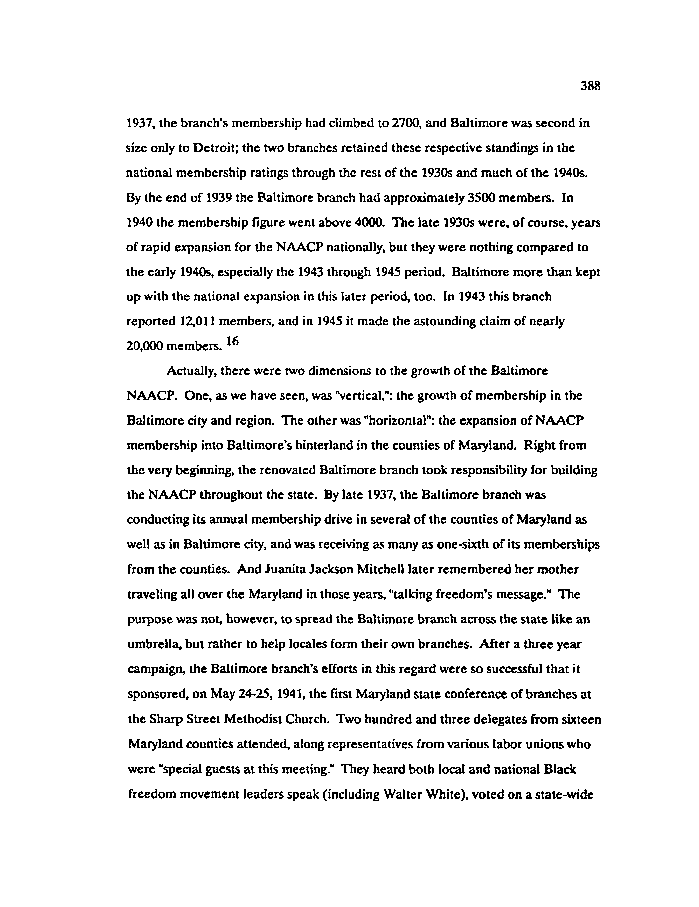|
388
1937, the branch's membership had climbed to 2700, and Baltimore was second in
size only to Detroit; the two branches retained these respective standings in the
national membership ratings through the rest of the 1930s and much of the 1940s.
By the end of 1939 the Baltimore branch had approximately 3500 members. In
1940 the membership figure went above 4000. The late 1930s were, of course, years
of rapid expansion for the NAACP nationally, but they were nothing compared to
the early 1940s, especially the 1943 through 1945 period. Baltimore more than kept
up with the national expansion in this later period, too. In 1943 this branch
reported 12,011 members, and in 1945 it made the astounding claim of nearly
20,000 members.16
Actually, there were two dimensions to the growth of the Baltimore
NAACP. One, as we have seen, was "Vertical,": the growth of membership in the
Baltimore city and region. The other was "horizontal": the expansion of NAACP
membership into Baltimore's hinterland in the counties of Maryland. Right from
the very beginning, the renovated Baltimore branch took responsibility for building
the NAACP throughout the state. By late 1937, the Baltimore branch was
conducting its annual membership drive in several of the counties of Maryland as
well as in Baltimore city, and was receiving as many as one-sixth of its memberships
from the counties. And Juanita Jackson Mitchell later remembered her mother
traveling all over the Maryland in those years, "talking freedom's message." The
purpose was not, however, to spread the Baltimore branch across the state like an
umbrella, but rather to help locales form their own branches. After a three year
campaign, the Baltimore branch's efforts in this regard were so successful that it
sponsored, on May 24-25,1941, the first Maryland state conference of branches at
the Sharp Street Methodist Church. Two hundred and three delegates from sixteen
Maryland counties attended, along representatives from various labor unions who
were "special guests at this meeting." They heard both local and national Black
freedom movement leaders speak (including Walter White), voted on a state-wide
|

